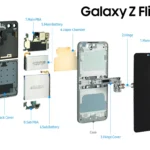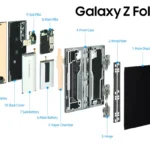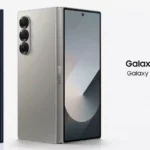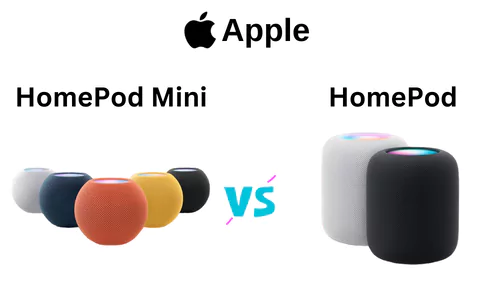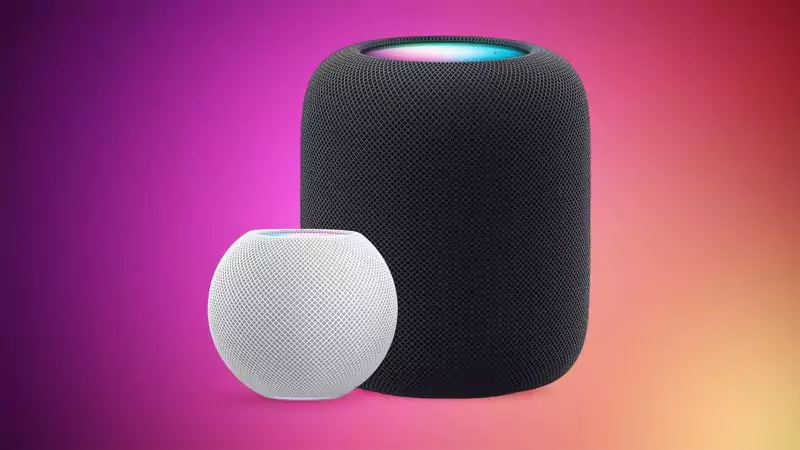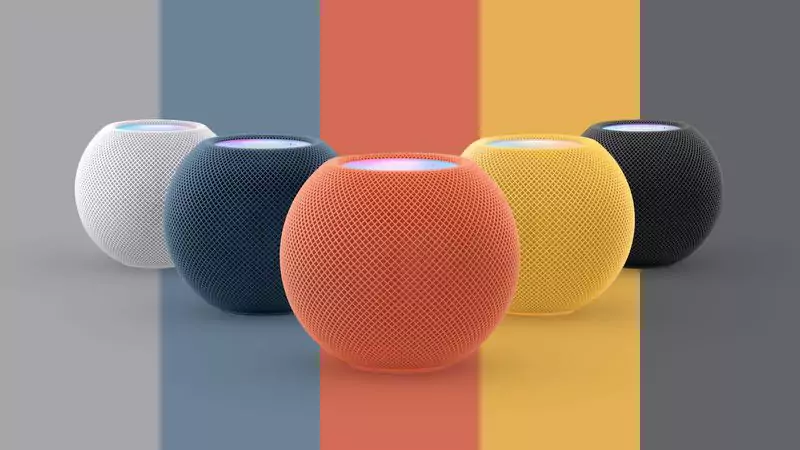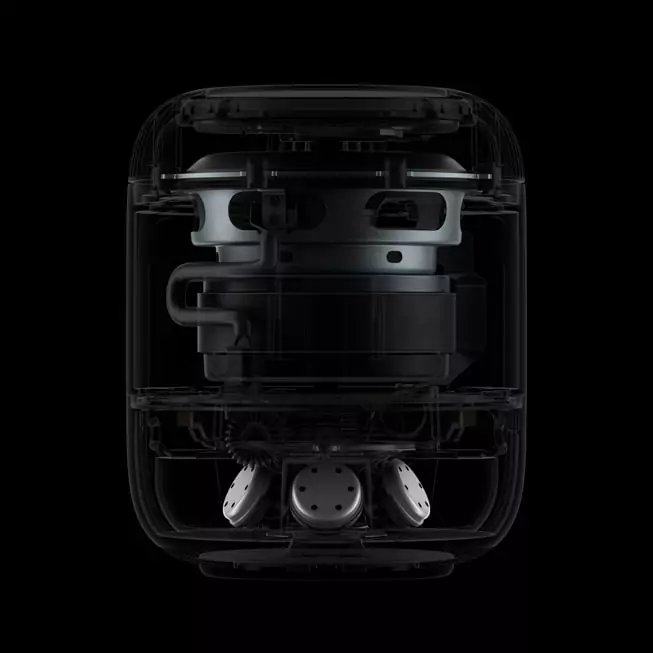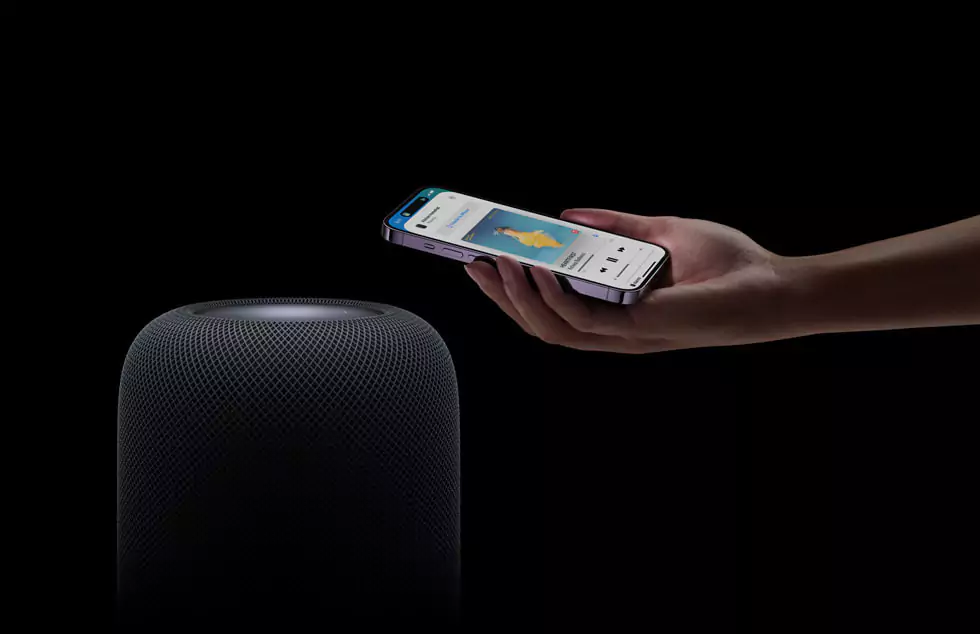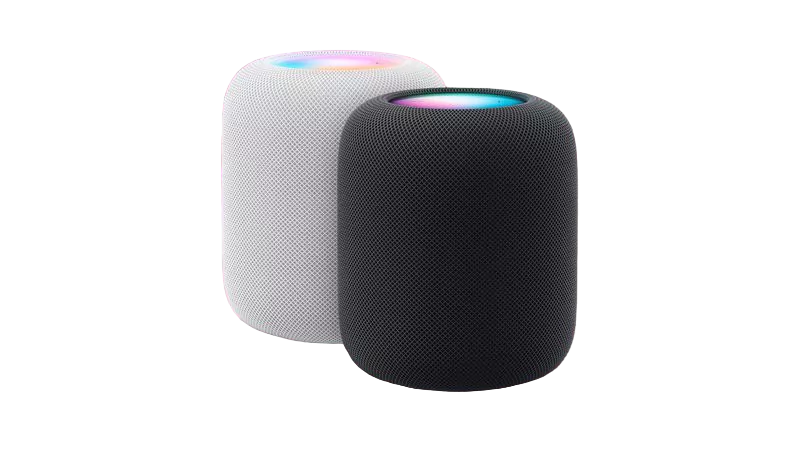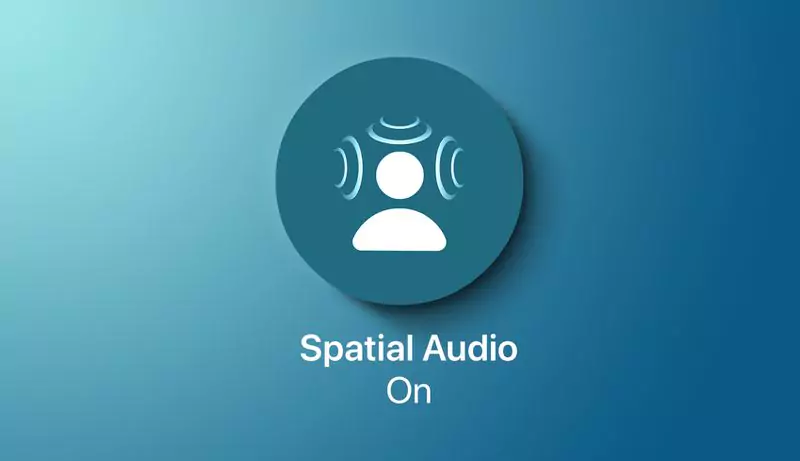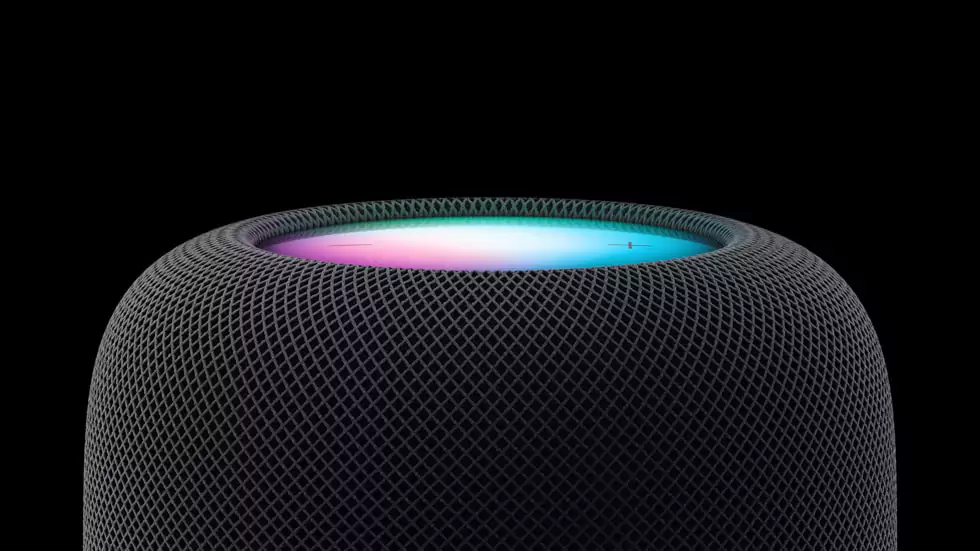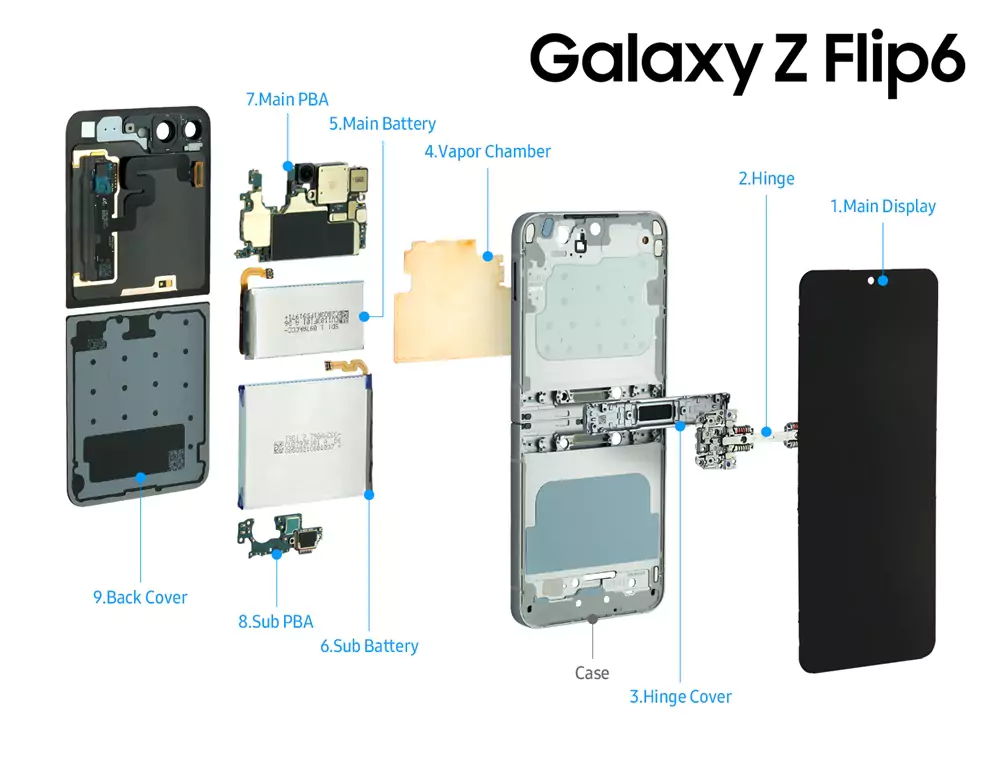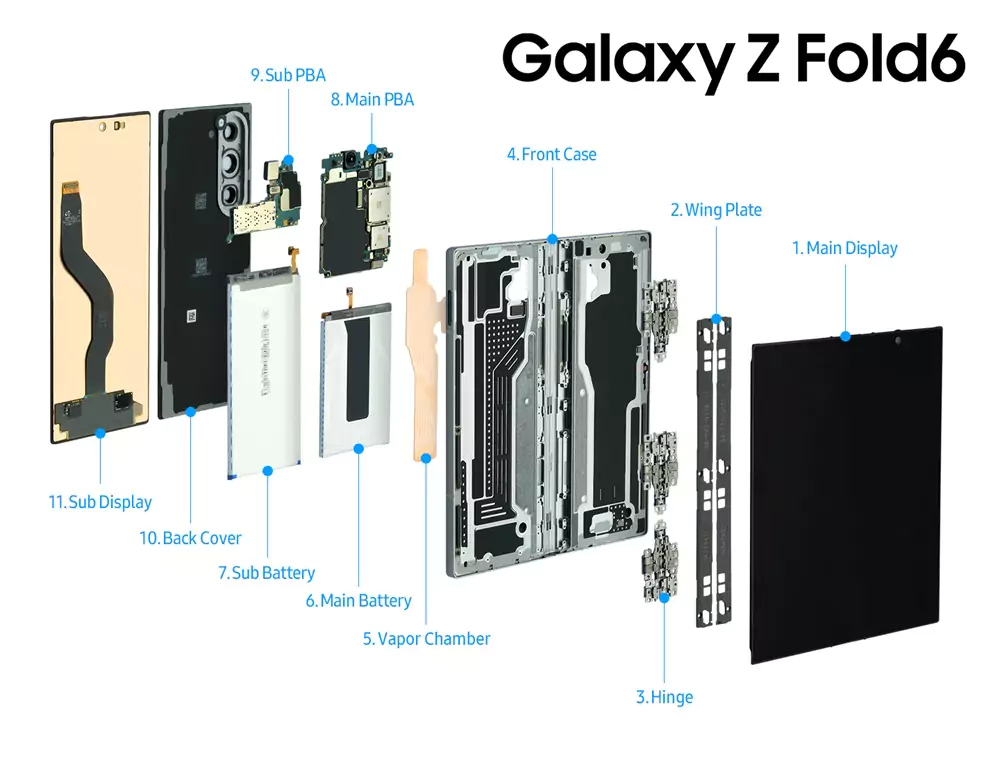Apple introduced the HomePod mini, the first addition to the HomePod series, in 2020, with a redesigned spherical form and the S5 processor. HomePod mini, which costs $99, is a lot more accessible and adaptable version of Apple’s smart speaker in a tiny shape.
Apple just released the full-size HomePod, so there are now two HomePods to select from. Should you buy the full-size HomePod or its junior sister, which costs three times as much as the HomePod mini? Our article explains the differences between the two HomePods and might help you determine which one is right for you.
Similarities
- Siri and voice recognition
- Design with acoustically transparent mesh fabric and a backlit touch surface that illuminates from edge to edge
- U1 ultra wideband chip and audio handoff
- Temperature and humidity sensor
- Multiroom audio
- stereo pair capable
- Smart home hub
- Thread support
- Find My, SiriShortcuts for Intercom, ambient sounds, music alarms, sound recognition, home theatre with Apple TV 4K, and lossless audio are all available.
Differences
HomePod mini
- the compact, spherical design
- 3.3 inches tall
- S5 chip from 2019’s Apple Watch Series 5
- Full‑range driver
- Dual force-cancelling passive radiators
- Three-microphone array
- Available in White, Space Gray, Orange, Yellow, and Blue
- $99
HomePod
- large capsule design
- 6.6 inches tall
- S7 chip from 2021’s Apple Watch Series 7
- High-excursion woofer
- Five horn-loaded beamforming tweeter array
- Four far-field beamforming microphones
- Room-sensing
- Support for Spatial Audio with Dolby Atmos
- White and midnight are both available.
- $299
Design
The HomePod Mini is substantially smaller than the full-size HomePod, which is just under seven inches tall. The smaller HomePod mini, like the original HomePod, features a tiny spherical form, but the original HomePod has a larger, capsule-like appearance. The HomePod is bigger than the HomePod Mini to accommodate more audio gear for a more complete sound.
Both products feature a backlit touch surface that illuminates from edge to edge, as well as audio-conductive mesh technology from Apple. The HomePod and HomePod mini share the Siri waveform that shows on the top display to signify when Siri is on, as well as integrated volume touch controls. Both HomePods are also powered by a wired connection, making neither portable.
The HomePod mini’s spherical form is more subtle than that of its bigger sister, making it the recommended gadget for tables and surfaces with limited space or where you don’t want it to stick out. Similarly, the bigger HomePod will be better suited to TV sets and wider locations.
The bigger HomePod is only available in White and Midnight, however, the smaller HomePod comes in White, Space Gray, Orange, Yellow, and Blue, which may be a significant factor when purchasing to match your home style.
Audio Equipment
The biggest significant difference between the two HomePods is in their audio circuitry. The HomePod mini features a single full-range speaker driven by a neodymium magnet and a pair of force-cancelling passive radiators for deep bass and clean high frequencies.
HomePod, on the other hand, includes a huge, Apple-designed woofer for deep, clean bass, as well as a proprietary array of five beam-forming tweeters for pure high-frequency acoustics, each with its own amplifier and directional control.
Both devices feature an acoustic waveguide created by Apple to steer sound flow down and out toward the bottom of the speaker for an immersive 360-degree audio experience. Users may now position HomePod practically anywhere in a room and experience consistent sound.
Because of its larger size, the HomePod may create a broader, deeper, and more expansive soundscape. It produces richer, fuller, and louder sounds than the smaller HomePod. The HomePod MIni still produces clean, practical, and unexpectedly nice sound, but there is no doubt that the bigger HomePod’s extra size and audio components overwhelm it greatly.
Microphones
When music is playing, the HomePod mini employs a three-microphone array to listen for “Hey Siri,” and a fourth inward-facing microphone helps separate sound coming from the speaker for better speech identification. For the same reason, the larger HomePod employs a quartet of microphones.
These mics help to cancel echo and allow Siri to understand people whether they are close to the device or across the room, even while loud music is playing. It’s unclear if the extra mics on the HomePod are to compensate for its louder, bigger sound profile, while the HomePod mini doesn’t require a four-microphone array owing to its smaller size, or whether it’s a material difference between the two models in terms of sound isolation.
Software and processor
The HomePod is powered by the S7 chip from the Apple Watch Series 7, while the HomePod Mini is powered by the S5 chip from the Apple Watch Series 5 and Apple Watch SE. The CPU in the HomePod enables it to employ powerful software for real-time acoustic modelling, audio beam-forming, and echo cancellation. HomePod mini’s CPU is used to boost the performance of its less powerful audio hardware.
In order to get big sound from a small package, the Apple S5 chip in the HomePod mini collaborates with advanced software to analyze the unique characteristics of the music and apply complex tuning models to optimize loudness, adjust the dynamic range, and control the movement of the driver and passive radiators in real-time.
The S7 processor in the bigger HomePod also handles certain unique features, including as bass control using real-time software modelling, which guarantees the speaker produces the deepest and cleanest bass possible while minimizing distortion. Finally, when it comes to deciding between the two variants, the CPU of the HomePod is unimportant.
The S5 is an older processor, yet it is modestly more powerful than the S7. The S7 semiconductor is functionally identical to the S6 chip, implying that it is just one generation newer than the S5 processor. Both S-series processors use the same operating system and give an equivalent computational audio performance. Because many HomePod functions are not performed locally, a newer processor is not always preferable.
Spatial Perception
The bigger HomePod detects its location in the room via spatial awareness. This enables it to automatically modify and optimize the audio for greater sound quality based on its placement in the room. The HomePod detects walls and corners and utilizes this information in conjunction with its directional tweeters to distribute sound uniformly around the room while eliminating distortion and echo. Only the original HomePod has spatial awareness, but the HomePod mini does not.
Stereo Sound
You can create a wider soundstage for richer, more enveloping sound by adding a second HomePod to your setup. Each HomePod may play its own left or right sound channel, distinguishing between ambient and direct energy. Both devices can automatically locate and balance two speakers using both direct and reflected audio.
Despite the fact that the two speakers work as one, each HomePod communicates with the other to ensure that only one speaker answers Siri requests. While both HomePod and HomePod small allow stereo pairing, you cannot pair a HomePod mini and a full-size HomePod at the same time. Instead, only two HomePods or two HomePod minis may be used as stereo speakers. Multiroom audio is supported by both HomePods and may be blended.
Spatial Audio
Only the full-size HomePod supports spatial audio with Dolby Atmos, which was enabled in 2021 via the iOS 15.1 software update. The full-size HomePod is your only option if you intend to listen to a lot of Dolby Atmos audio, such as through Apple Music or in a home theatre setup.
Final Suggestion
Overall, it is evident that the HomePod and HomePod tiny are distinct devices with distinct functions. The HomePod is a more feature-rich, high-end speaker with an emphasis on sound quality, whereas the HomePod Small is designed to be more accessible and adaptable. This is reflected in the HomePod mini’s lower pricing.
The small HomePod appears to be more suited to locations like hallways or kitchens, but the standard HomePod appears to be better suited to bigger rooms where audio material is consumed more frequently, such as living rooms.
The bigger HomePod’s superior audio fidelity is the primary incentive to purchase it. The bigger HomePod is the sole choice for enjoying Spatial Audio with your HomePods, but the stereo experience and home automation are still available.
